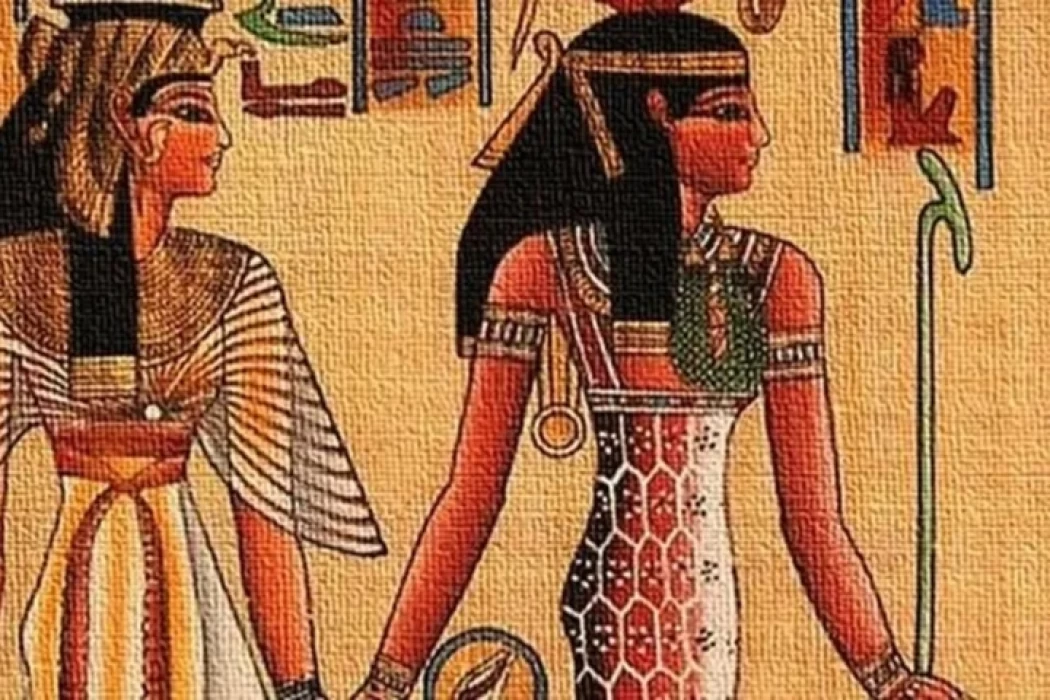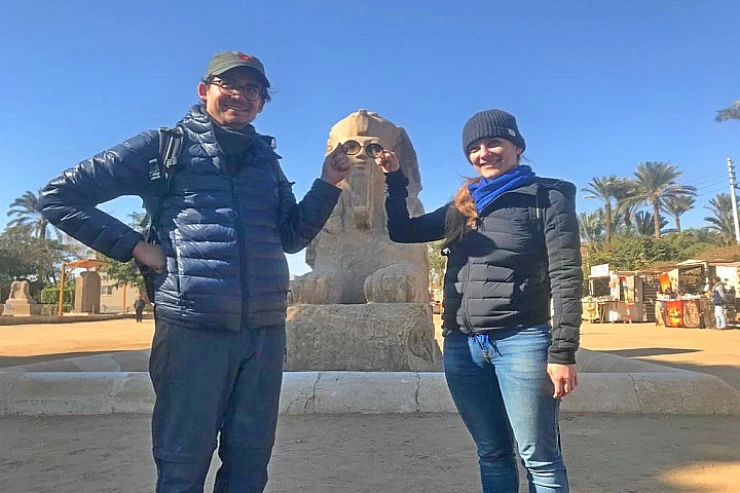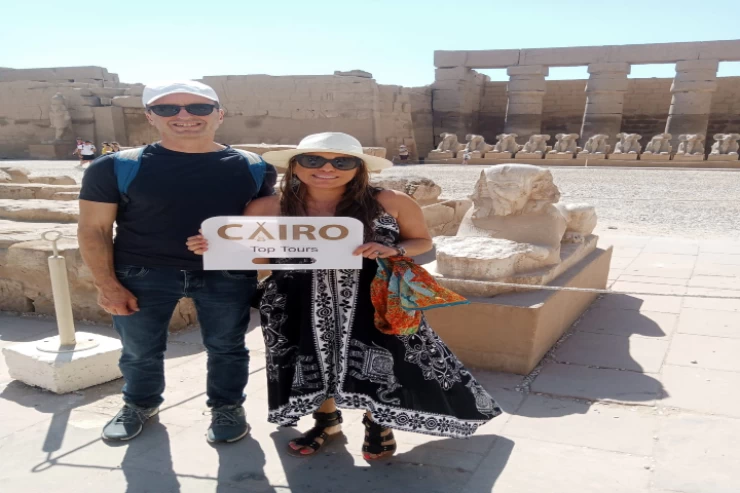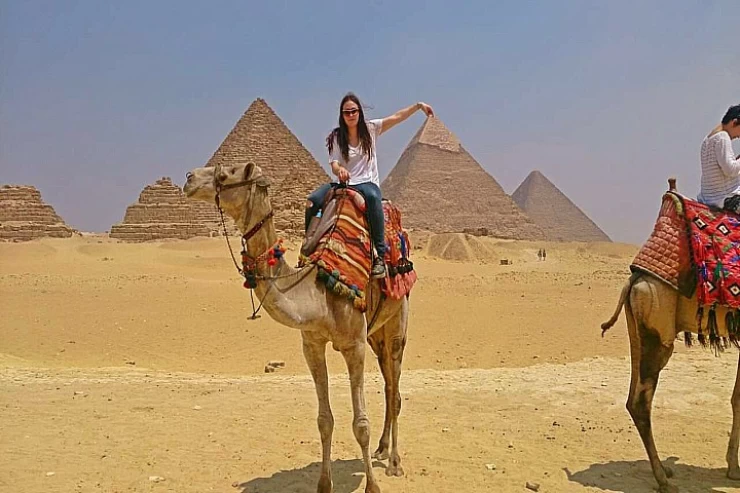
Clothing in Ancient Egypt
Ancient Egyptian Clothes History
The Egyptians in prehistoric times wore leather as their clothes, and in the era of the Old Kingdom, the priests wore leopard skin as their official uniform, along with a kilt (open skirt) from the belt area down. Let's start a journey to Egypt tours and the history of the ancient Egyptian and their lifestyle.
The kilt: a development from the kilt, which is a cloth wrapped around the waist in the form of an open skirt that varies in terms of shortness, length, shape, breadth, folds, beads, and pendants. During Egypt travel packages you will recognize the paintings on the temples' walls clothing the kilts.
Apron: A long, sophisticated kilt worn in winter. You can see its design drawn on the walls of Luxor Temples just by joining our Luxor day tours on the east bank.
Shirt: a garment for the chest and abdomen, open from the front.
Belt: A cloth that has a buckle and is decorated with the folds in it.
What is the royal kilt in ancient Egyptian?
Bahat: The covering of the private parts that end with fringes in the form of petals or bands and is called blood, basal.
Tigers: large petals and bands.
Sndt: It is the tail that is fixed in the royal kilt, and it resembles the tails of animals as a tail. You can see the status of King Ramses II wearing it in the Egyptian Museum during Cairo day tours.
The lion, the dog, the crocodile, the bull...etc. denote strength and ferocity first and attempt the background so that evil spirits do not enter into it, as these animals are divine symbols of Spirits from entering. Thutmose III was wearing a shandida, which is tail. The wolf's tail represents the god of war
The kilt was first worn by kings, and from the first to the fourth dynasties it was worn by senior statesmen and nobles, then it became worn by clerks, servants, and peasants. Over time, the kilt became short in the front and covered the leg from behind, and it may have been wrapped around the waist more than once. Most of the Egyptian clothing fabrics were made of linen (taken from the stems of the papyrus plant), as it reduces the sensation of heat, especially if it is thin and transparent.
Their clothing has gone through all stages of development from the nakedness of primitives to the most luxurious garments of the age of the Empire, Cairo Top Tours recommends joining our Egypt luxury tours to see more attractions and listen to Egyptian history to know more about their lifestyle.
How were children dressed in ancient Egyptian?
In the beginning, children, male and female, remained naked until the age of thirteen, except for earrings and necklaces, which girls used to show a kind of decent guard, so they gird themselves with a beaded belt around their waists
The servants and farmers were confined to a piece of cloth that covered their nakedness. When it was the era of the Old Kingdom, free men and women used to walk with their bodies naked above the navel, covering what was below it to the knee with a short, narrow loincloth of white linen. And since modesty was the result of habit, not nature, these simple clothes satisfied the conscience of these people, just as the English in the Victorian era were satisfied with the kilt and the waist or the evening clothes that American men wear these days.
How true is the old saying: “Our virtues are nothing but meanings that days give to actions and habits.” Even the priests themselves in the era of the first Egyptian families were satisfied with covering their nakedness in the statue of Renover. Gather your family and kids in one of our Egypt family tours and share more about Egyptian habits together, also check out our guided Egypt classic tours.
When wealth increased, clothes increased, so the middle state added a second loincloth over the first and larger than it, and the modern state added a cover for the chest and a shroud for the shoulders that was worn from time to time. The charioteers and grooms wore full sumptuous suits and galloped through the streets to make way for their masters' chariots.
Women's clothes in ancient Egyptian
Women discarded the narrow loincloth in the late times of prosperity and replaced it with a loose garment that fell from the shoulders and fastened with a clasp under the right breast. Embroidered dresses with countless different fringes appeared, and modern patterns and styles leaked into homes like snakes to spoil the primitive paradise of nakedness for their owners. The most famous queens for their beauty and luxurious clothes are Nefertari, Cleopatra, and Nefertiti. You can visit our Egypt small group tours and enter the valley of queens to see how were they dressed.
- Antiquities and drawings to discover in Egypt budget tours confirm the stability of the Egyptian costume:
- Some of them reveal a special note for festive clothes and the interest of the Egyptians in embroidered fabrics imported from abroad with the beginning of the Middle Kingdom, and it is clear that there are many differences between the costume and clothes of women, maids, and priests.
- The woman first wore fringed clothes, then wore a narrow white linen skirt that extended to her knees, then folded dresses were invented and dresses gradually emerged that extend to the woman's feet despite the narrow sleeves.
- The shirt was usually of one color. No decoration except for its upper edge
- Or decorated sometimes, and clothes sweetened with drawings were rare, and these decorations
- Horizontal or vertical lines or confined to a feathery ornament or rosettes spread over the breasts
To throw a network of beads over the simple shirt that was worn over the regular dress (as represented in the statue of Nefert, the wife of the high priest Rahotep, which is in the Egyptian Museum
Clothes in ancient Egypt - royal outfit
Al-Nims: It is the royal headdress. At first, it was a piece of linen gathered together behind the head. Starting from the Third Dynasty with King Netrett or Djoser, the kings began to wear it over the wig. And his braids became folded, and the band of the nemes was pressed firmly above the eyebrows and tied firmly under the braid that descended on the back.
The robe: a piece of linen half a meter to a meter long and 60 cm wide, wrapped around the body (clockwise) and covering the area between the waist and the knees. on the body.
Apron: It was worn by the kings and nobles of the Middle Kingdom, half-braided, wrapped around the body (counterclockwise), pulling the braided part forward and protecting it from dirt or bending and wrinkling with the fingers while tightening it in place. A strange knot is held in the middle of the belt.
Al-Jawbla: A piece of cloth wrapped around the body with a large fold in the front from the belt area.
The long robe: It appeared starting from the modern state and consisted of a piece of cloth with a length equal to twice the length of the person from shoulder to floor and its width from hand to hand.
Priests' costume: With the onset of the Old Kingdom, the priests' uniforms became limited to linen, and wool and leather were forbidden because they came from animals. While the skin of the leopard was confined to a priest (cm), the priest's long robe was wrapped around his body, and the upper part was attached to the top of the shoulder.
Clothing in ancient Egypt - women's fashion
Women took care of the elegance of their clothes, so the clothes of the women of the middle classes were simple but acceptable, in contrast to the women of the royal family, nobles, greats, and priests, who wore light transparent clothes embroidered or embroidered with bright colors. Women's clothing generally consisted of:
The skirt: A straight piece of cloth fastened with a ribbon that goes around the middle and then hangs in front of it until below the knee. A shoulder cover is usually worn with it. The skirt was for men as well.
Al-Sudiri: A narrow, high-waisted robe that reaches the foot and has one color. At parties, it is embroidered with motifs and decorated with colored beads.
The robe: A piece of cloth that is twice as wide as a person’s length.
Women's clothing was simpler than men's and less varied. They were decorated with drawings and horizontal or vertical lines. Since the Eighteenth Dynasty, the women's dress has changed to two pieces, namely the narrow shirt that covers the captive shoulder and keeps the right shoulder naked and has an outer robe. Then the robe developed and became falling over the captive arm, while the right arm remained naked.
explore more about the Egyptian closes through Egypt Luxury tours with cairo top tours professional team


















